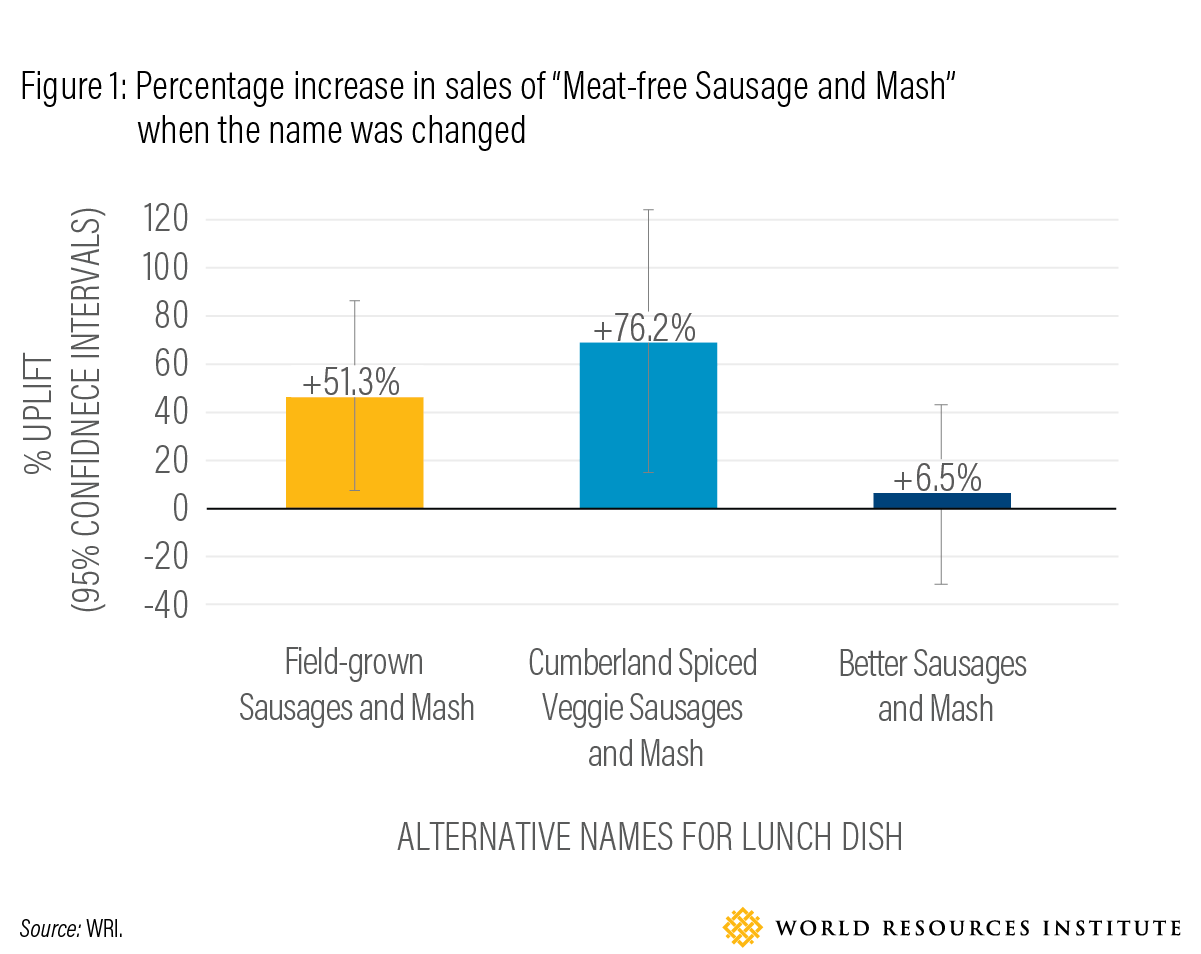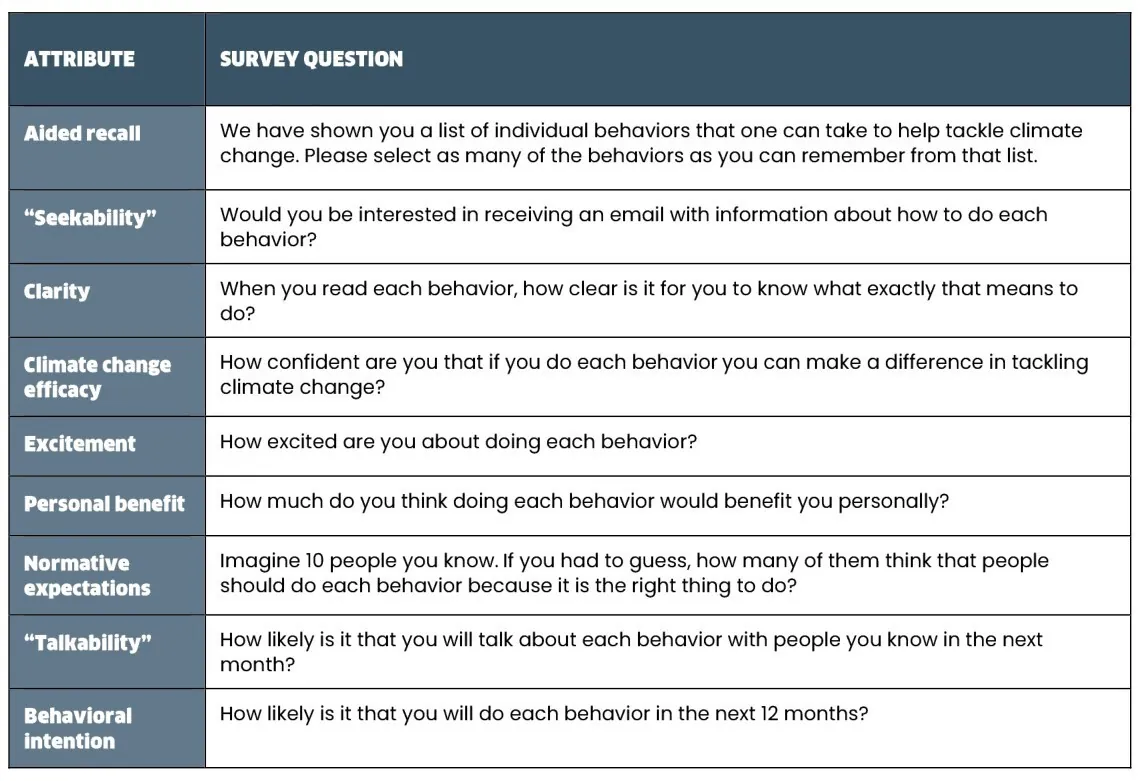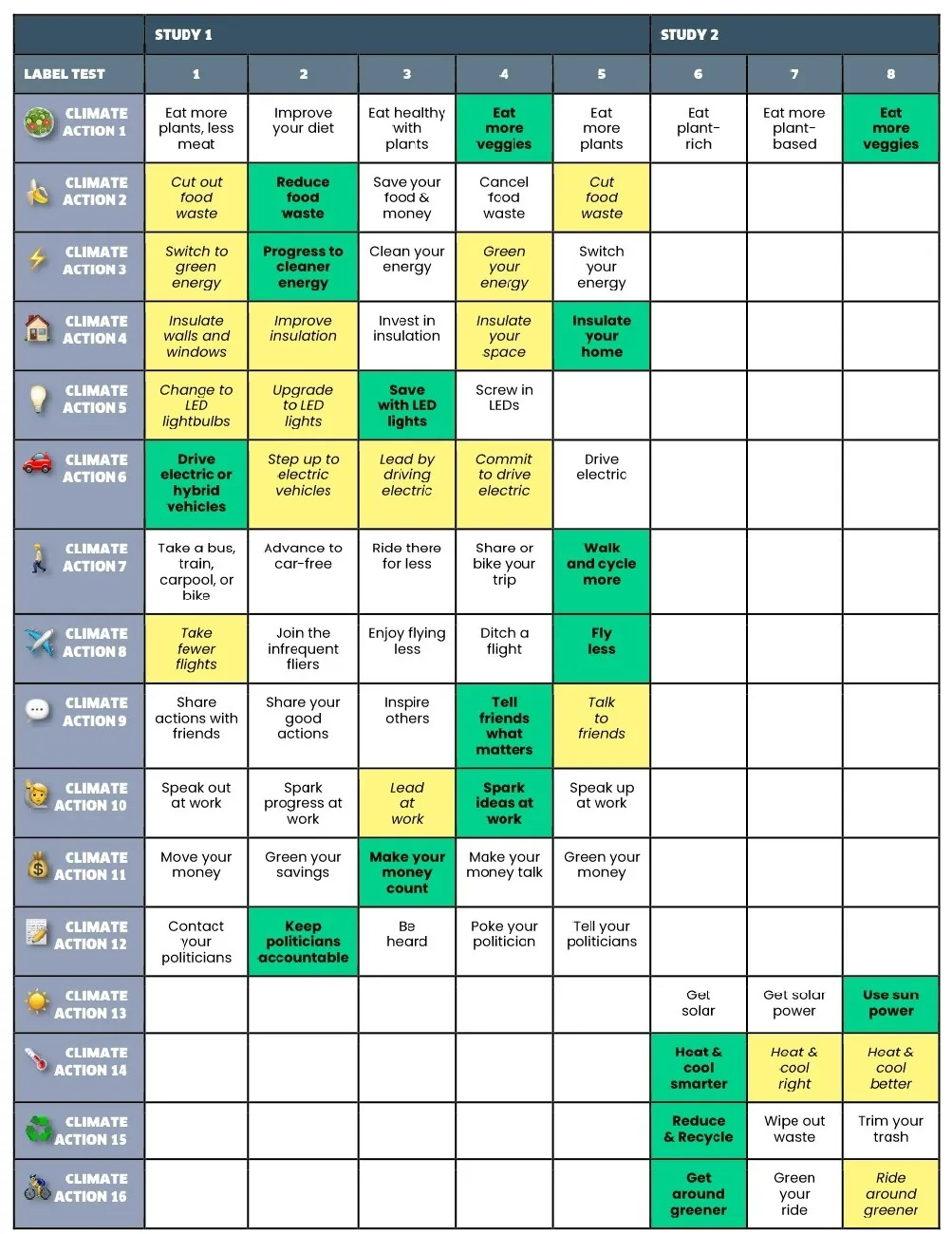Mere seconds. That’s the time your campaign might have to help a person find a climate action that might be right for them. Fail to connect in those few precious seconds and their attention is lost, as they hit the browser’s back button, flick to the next channel or skip an ad.
The root of this challenge lies in human behavior. People don’t read every word on a screen. Instead, they scan and seek the quickest, most reasonable path to what they believe is likely to get them to what they may want. In fact, most of the choices that we make every day are satisfactory rather than optimal, a cognitive heuristic (or shortcut) called satisficing.
Making climate action inviting
Behaviorally-informed labeling can be a powerful tool to make climate actions more inviting to people. For example, WRI’s Better Buying Lab found that changing the labels for a dish name from the original “Meat-free Breakfast” to “Field-Grown Breakfast” resulted in an 18% uplift in sales in a grocery store in the UK.

In our 4-country study (with 16,748 respondents from the US, Canada, the UK, and Australia) we set out to test a series of climate action labels and learnt that often terms that seem appealing are not always the best to compel action.
The right action labels on climate action platforms can help people quickly find relevant choices and lead them to the actions they are most likely to adopt and share.
To determine which labels are most likely to drive climate action, Rare conducted two quantitative studies of different labels for a total of 16 different climate actions*. We randomly showed respondents one of several lists of labeled actions and asked a series of questions about the labels to measure them against 9 attributes, described below.**

The most effective climate action labels
We found that, overwhelmingly, the bolded labels highlighted in green performed best, regardless of geography, with minor exceptions: Ride around greener performed similarly to Get around greener in the US; and Green your energy and Switch to green energy performed similarly to Progress to cleaner energy in the UK.
Yet, not all of the green labels performed better on all attributes than a few runners-up, italicized and highlighted in yellow. The similarities in performance among some of the actions suggest flexibility in how we use them.

In some cases, we can hypothesize why some labels performed better than others. For example, the positive frame of Eat more veggies potentially outperformed Eat more plant-based or Eat plant-rich thanks to its informal tone. Similarly, we suspect that Walk and cycle more is the best performer because it doesn’t feel sacrificial (like Advance to car-free), it is clear (unlike Ride there for less), or difficult to do (like Take a bus, train, carpool, or bike). Finally, given the global popularity of the 3Rs Initiative (reduce, reuse and recycle), it is not surprising that Reduce & recycle outperformed the other two tested labels on nearly every attribute.
Among the best performers and the runners-up, we encourage you to pick the labels that fit best with the rest of your communications strategy.
What if we all spoke the same climate language?
Currently, many climate actions appear to be what are known as “complex contagions”. These actions are unlikely to be adopted by people after a single exposure. Instead, people often require multiple exposures within their networks to reach a sufficient threshold in order to believe the norm is sufficiently established and, eventually, to adopt the action. For example, Potential Energy found that an average person needs to see and hear about climate at least 80 times a month to support climate action.
To improve the effectiveness of climate communications (within and beyond climate action platforms), we should adopt the same climate action labels across actors, platforms, and domains. A unified labeling system has the potential to cut through the noise and reduce incoherence across behavior change efforts, which in turn can increase climate change engagement and action.
What’s next?
The first step involves you: the climate community, climate communications experts, heads of public and private organizations, media companies, and change-makers working to inspire climate action. Consider how you are currently communicating climate action(s) to your audiences and, where relevant, apply the winning labels from this research to supercharge your communications.
We also intend to keep studying labels. Thus far we have studied the labels in an online survey format, insulated from the broader climate change context that climate action platforms often provide. While we hypothesize that best performing labels from our studies are also likely to perform well “in the wild”, we encourage further testing. For example, climate action platforms may find it useful to A/B/n test the labels within their platforms to establish the best performing labels for their platform and target audience segments.
Finally, while good labeling is an essential tool to increase climate change engagement, there are other science-based principles that can make your climate communications more inviting, and ultimately more effective.
About this research:
*Both of the studies referenced in this article were conducted online between September and November 2021, with 16,748 respondents from the US, Canada, the UK, and Australia. For each country, our samples were quota sampled to match census data in sex and age group. We additionally matched sampling in the US to the “nested” quotas of age group, sex, and ethnicity.
**The 9 attributes were built on leading indicators of behavioral adoption (like the recent meta-analyses, showing people are more likely to take an action, if they believe it is going to be effective at achieving the desired outcome); theory-driven measures of psychological states driving climate action (such as normative expectations, which were shown to be relevant for shifting behavior); and ideation sessions on what makes an appealing label.
If you would like to learn more about the design of the studies mentioned in this article, reach out to us here.
For detailed performance data of each label against attributes, click here.
⦿ ⦿ ⦿
This post is authored by Rakim Rakhimov of Rare. Rare is a non-profit focused on inspiring change so people and nature thrive. Rare is part of the Count Us In leadership team. Together, we are working to share data and insights as part of a public good, intended to help anyone who sees themselves as part of the movement to address climate change, the biggest challenge humanity faces.
Count Us In harnesses the power of popular culture to inspire and engage mainstream audiences to take climate action – driving wider systems change. We reach the moveable middle through their passions and interests. We deliver impactful popular culture campaigns, facilitating unexpected partnerships in sports, music, social media, entertainment and gaming.
Get in touch to learn more.
This post is shared under a Creative Commons Attribution-ShareAlike License.